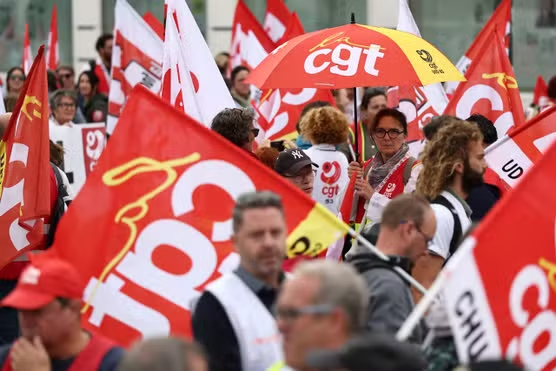
By Gerry Scoppuottelo
The Starbucks Workers United rank and file union organizing campaign continues to stir hopes among union activists. Last month (June 2022) was the best month ever with 82 election wins. The 5,080 unionized workers would represent nearly 10% of the parent union Workers United/SEIU.
The excitement of new labor organizing was palpable at the recent Labor Notes Conference in Chicago last month. A record 4000 rank and file activists, organizers and labor leaders attended. There were militant speeches from Chris Smalls (Amazon Labor Union); Stacy Gates, (recently elected President Chicago Teachers Union) Sean O’Brien (recently elected President of the Teamsters Union); and Sara Nelson (Flight Attendants). All of the above spoke on Thursday at the outdoor mass rally at Chicano Teamsters Local 704 as well as the big indoor meeting at the conference site – with the exception of Sara Nelson who was in the hall but did not speak. replaced by Bernie Sanders, the only non-labor leaders to address the crowd. At the previous Thursday Teamster rally, Nelson twice mentioned the desirability of a General Strike, drawing whoops and hollers from the crowd.
At neither mass meeting was there a speaker from the Starbucks Workers’ United campaign or the Communication Workers of America (CWA) currently organizing Alphabet/Google on both coasts.
The Starbucks campaign deserves special attention here, exposing as it does, the weakness of the labor bureaucracy to understand or handle the prairie -fire Starbucks organizing drive or recognize that desperate material conditions, although “hidden,” are propelling union organizing. For the most part it has been rank and file baristas who have been petitioning the NLRB, agreeing over appropriate bargaining units and filing Unfair Labor Practices and not union staff of whom only three have been assigned nationally to the entire campaign.
It is now apparent that Workers United may never have contemplated or prepared for the massive organizing drive that is now underway and which they are organizing, for the most part, remotely. The now explosive scope of the Starbucks campaign could scarcely have been anticipated by Workers United, nor could it have foreseen the rank and file blitzes now occurring in Massachusetts and elsewhere driven by low-paid, part time, young workers, very many of whom are LGBTQ. Their youthfulness and part time status masks the reality of the precarious economic reality they face including 10% inflation, out of control rent costs, crippling credit card and tuition debt and an anti-union campaign financed by a $4 billion corporate giant.
But baristas are highly skilled workers who must master quick delivery of complex food and drink orders. They take pride in their work and are willing to fight for their futures. They must cobble together several part time jobs to get by. The unemployment rate for such part time workers in June of this year was 6.7%. (This is the U-6 unemployment rate,. those that work part time who cannot find full time employment.)
The current labor law framework enacted to contain the unemployment and resulting labor uprisings of 1934 has been outmoded by new material conditions. By the late 1930’s the CIO’s industrial union imperative had cast aside the AFL’s useless craft organizing methods and was soon organizing a million new workers a year, deploying organizers by industry.
In 1973 one in four private sector workers in the U.S. (24.2%) held union membership cards, today that number is about 6%. Any union organizer will tell you that no union can afford to assign an organizer to a firm with fewer than 100 employees, Workers United notwithstanding. The Starbucks phenomenon was not supposed to happen, but it did. Workers in need of organizing burst through existing institutional barriers. They saw what happened in Buffalo and store by store they seized the chance to better their wages and working conditions.
The relations of production,revolutionized by the bourgeoisie, have made possible a national chain of 9,000 stores and a workforce of 250,000 workers who can communicate with each other easily and instantaneously. The service and healthcare industries today predominate, having replaced the basic industries of rubber, steel, auto(domestic) and electronics that the CIO feasted on between 1936-1941.
The National Labor Relations Act (1935, 1947, 1959) has thus far curtailed union organizing success and capacity, but workers have found a way to organize nevertheless. As difficult contract fights emerge, the Starbucks campaign must convert to an industry-wide class struggle to succeed – for all of us.



Be the first to comment